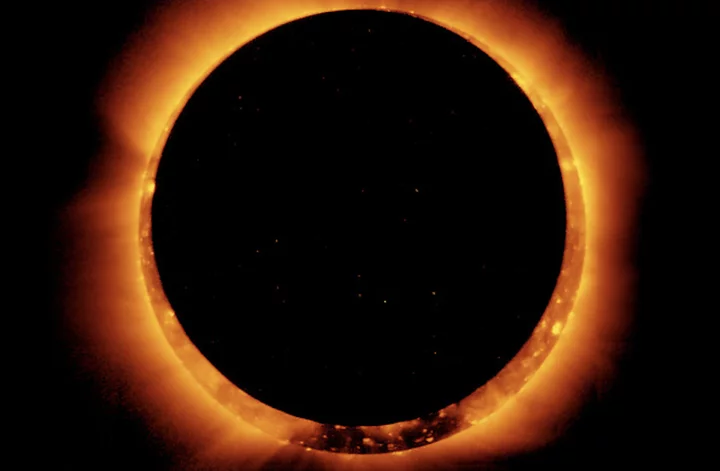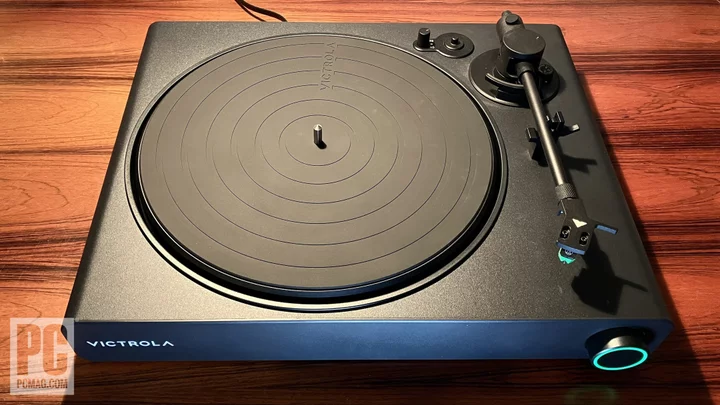A celestial spectacle will pass through the sky on Oct. 14. And you have an opportunity to safely watch.
The looming annular solar eclipse will be visible to millions in the U.S. as well as folks in Central and South America. Some will see the complete annular eclipse, wherein the moon passing in front of the sun creates a "ring of fire" view. Many others will experience a partial solar eclipse, as only part of the moon, from their vantage point, traverses our star. A partial eclipse will be visible in all 48 contiguous states (details below).
Crucially, it's dangerous to watch this solar eclipse without eye protection.
"The sun is never completely blocked by the moon during an annular solar eclipse," NASA emphasizes. "Therefore, during an annular eclipse, it is never safe to look directly at the sun without specialized eye protection designed for solar viewing."
SEE ALSO: NASA spacecraft flies right through sun explosion, captures footageAnd using a camera or telescope is even worse. "Viewing any part of the bright sun through a camera lens, binoculars, or a telescope without a special-purpose solar filter secured over the front of the optics will instantly cause severe eye injury," the space agency said.
How to safely view the annular solar eclipse
There's only one way to directly view a solar eclipse safely. That's with approved safety glasses or solar viewers that filter out harmful types of light. These viewers must meet the international standard "ISO 12312-2." That's the key number to look for when making your purchase.
(If you don't have eclipse glasses, there are indirect ways to view the eclipse, such as by making a pinhole projector, which NASA discusses here: https://science.nasa.gov/eclipses/future-eclipses/eclipse-2023/nasa-the-eclipse/.)
Eclipse viewing tips:
- Don't use damaged or scratched viewers.
- Use the eclipse viewers over your regular glasses (if you wear glasses).
- Don't remove the viewers until you've turned or looked away from the sun.
NASA employees watching an eclipse with eclipse glasses. Credit: NASA / Connie MooreWhere to buy eclipse viewing glasses
The American Astronomical Society (AAS) has amassed a great list of vetted sellers. You can find them at https://eclipse.aas.org/resources/solar-filters.
If you choose to buy your eclipse glasses from a website, you might see if the vendor is selling products that have been vetted by the AAS. There's a risk of purchasing unsafe or misleading products.
"In the weeks leading up to the August 2017 U.S. solar eclipse, such sites hosted numerous sellers of eclipse glasses and other solar viewers that had not been properly tested and shown to be safe," the AAS said. "We recommend that if you shop in an online marketplace (for example, to find eclipse glasses at the lowest price), you make sure that (1) the seller is identified on the site and (2) the seller is listed on this page. Otherwise you can't be sure you're getting a product you can trust to protect your eyes."
Want more science and tech news delivered straight to your inbox? Sign up for Mashable's Light Speed newsletter today.
Where to view the annular solar eclipse
The NASA map below shows where in the U.S. the full annular "ring of fire" solar eclipse will be visible (if weather allows, that is). It's the path on the left traveling from Oregon through Texas. It begins in Oregon at 9:13 a.m. PDT and ends in Texas at 12:03 p.m. CDT.
The path of the 2023 annular solar eclipse (on left) and 2024 total solar eclipse (on right). Credit: NASA / Scientific Visualization Studio / Michala Garrison; eclipse calculations by Ernie Wright, NASA Goddard Space Flight CenterBut many more people, though not in the path of the full eclipse, can still see a partial eclipse. The website Great American Eclipse has a number of maps and schedules showing when one can view the eclipse. For example, on Oct. 14, 2023, the moon starts blocking out part of the sun in Bryce Canyon National Park at 9:09 a.m. MDT. The full annular eclipse occurs there at 10:29 a.m. MDT, lasting for nearly three minutes. Then, the eclipse completely ends at 11:57 a.m. MDT.
The map below from NASA gives an idea of how the solar eclipse — specifically how much of the sun will be covered by the moon — will be visible in different regions at 10:50 a.m. ET on Oct. 14, 2023.
A map showing how much of the sun will be eclipsed at 10:50 a.m. ET on Oct. 14, 2023. Credit: NASA / ScreenshotThis Oct. 14 event is the last annular solar eclipse that will be visible from the U.S. for quite a while. The next one doesn't happen until June 21, 2039.
Be safe. Be astonished.









